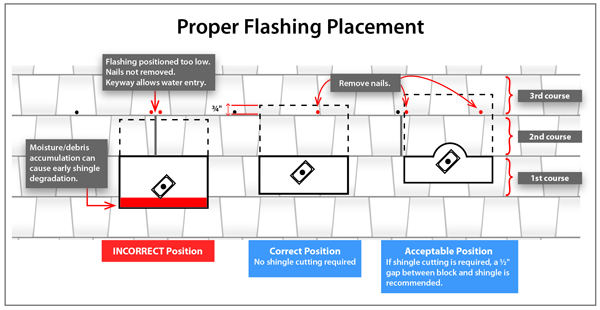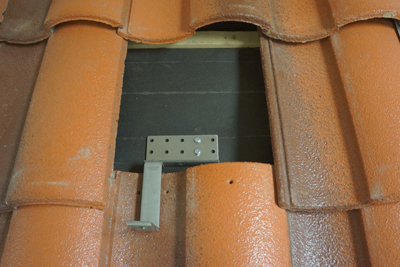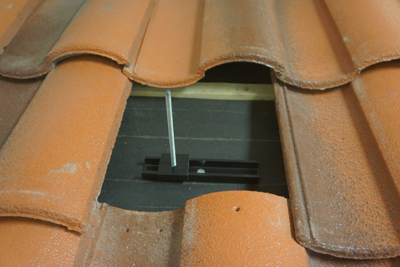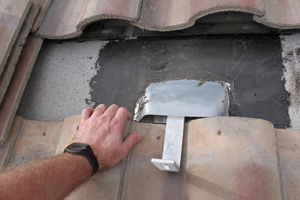Common Waterproofing Code Violations: For rooftop PV installations
 Reliable waterproofing is critically important to the financial performance of a photovoltaic (PV) system. Installers drill dozens of holes to mount the typical rooftop solar array and, when properly waterproofed, this helps ensure the 30-year life of a new PV array.
Reliable waterproofing is critically important to the financial performance of a photovoltaic (PV) system. Installers drill dozens of holes to mount the typical rooftop solar array and, when properly waterproofed, this helps ensure the 30-year life of a new PV array.
If a leak develops under the array, however, a system owner can incur thousands of dollars in costs to remove and reinstall (R&R) the system. These maintenance costs are projected to be the single, largest operations and maintenance (O&M) expense for most homeowners going solar. R&R costs range from a bargain basement price of 50 cents per watt, all the way up to $1.50+ per watt for older systems or more complex roofing applications.
Two of the most common waterproofing code violations for rooftop PV installations are found on shingle roofs, and the other on tile roofs. Yet, the International Building Code (IBC) and the International Residential Code (IRC) are very clear in requiring flashings for all penetrations. Flashing mounts are designed to ensure a watertight panel installation, ultimately withstanding years of extreme weather and harsh climates.
Code requirements
The IBC 1503.2 states: “Flashing shall be installed in such a manner so as to prevent moisture entering the wall and roof.”
Similarly, the IRC’s R903.2 maintains: “Flashings shall be installed in a manner that prevents moisture from entering the wall and roof through joints in copings, through moisture-permeable materials, and at intersections with parapet walls and other penetrations through the roof plane.”
These codes go one step further by mandating that flashing be installed per the roofing manufacturers’ installation instructions.
The IBC 1507.2.9 states: “Flashing shall be applied in accordance with this section and the asphalt shingle manufacturer’s printed instructions.” And the IRC R905.2.8.4 reads: “Flashing shall be applied according to the asphalt shingle manufacturer’s printed instructions.”
Code violations
 Here are two of the most common waterproofing code violations for rooftop PV installations…
Here are two of the most common waterproofing code violations for rooftop PV installations…
-
Violation #1: Asphalt shingle flashings positioned below 3rd course
Most shingle manufacturers expect installers to follow the National Roofing Contractors Association (NRCA) guidelines for flashing. The NRCA requires that the “…upper edge of flashing to be lapped by the 3rd course of shingles.”
Installing the flashing into the 3rd course means an installer must remove any nails, thereby allowing the flashing to slide into position (see Figure 1). Some installers, whether attempting to save time or effort, don’t remove the nails and just slide the flashing as far up as possible. This causes two problems.
For one, the flashing doesn’t sufficiently cover the keyway (the area where the two adjacent shingles meet), so water can leak straight down into the penetration. The second problem relates to the water that becomes captured under the bottom edge of the flashing overhang. This can lead to biological growth, which can prematurely fail the shingle in the overhang area.
Failure to position the flashing high enough also leaves a larger area on the sides of the flashing, which permits water to reach the penetration though capillary action or wind-driven rain.
-
Violation #2: Tile mounts with no deck level flashing
The most common code violation on tile roofs, is not installing a deck level flashing at the underlayment level. This is a critical step because the underlayment is the actual waterproofing.
Whenever it rains, the tile will route most the water safely off the roof, but usually some amount of wind-driven rain will blow under the tiles where it hits the underlayment and runs down the roof and under the tile. If penetrations are not properly flashed at the deck level, leaks can occur and result in an expensive R&R.
The code requirements for tile roof flashing are similar to asphalt shingle roofs. The building code requires that flashings be installed per the roofing manufacturer’s installation instructions. Plus, an overwhelming majority of roofing tile manufacturers mandate flashing per the: Tile Roofing Institute (TRI) guidelines.
Following guidelines

 The TRI guidelines are certified with the International Code Council. All large tile manufacturers have certified their tile with the ICC, and most specify the TRI guidelines must be used in their ICC-ESR certification.
The TRI guidelines are certified with the International Code Council. All large tile manufacturers have certified their tile with the ICC, and most specify the TRI guidelines must be used in their ICC-ESR certification.
The TRI guidelines require a two-step deck and tile flashing process for all mounts that penetrate the tile. The guidelines state installers must use a: “Preformed flashing integrated into underlayment, installed to prevent moisture from penetrating roof deck.”
The deck flashing must be integrated (waterproofed) using either underlayment bibbing, which covers the upper edge and sides of the flashing, or optional sealing. According to the TRI guidelines, this option must comprise of: “Three-coursing with asphalt roof cement and reinforcing fabric for installation of deck flashing, when permitted by the building official.”
This means that the top and sides of the flashing should be sealed with roofing mastic, reinforced with a fiber mesh. For tile hooks that don’t penetrate the top surface of the tile, the TRI guidelines still require the deck flashing at the underlayment level as shown (see Figure 4).
Although it takes a few extra minutes to install a deck-level flashing, the benefits of this extra effort are immeasurable. Not only does it ensure the roof is code-compliant but, most importantly, it also the waterproof installation protects the customer’s investment in a PV system—thereby, producing the lowest cost per kilowatt-hour over the lifetime of the rooftop solar array.
QuickMount PV
www.quickmountpv.com
Author: Jeff Spies
Volume: November/December 2014










.png?r=7108)

